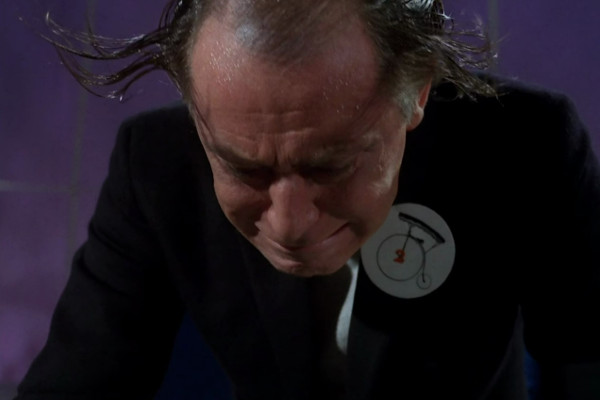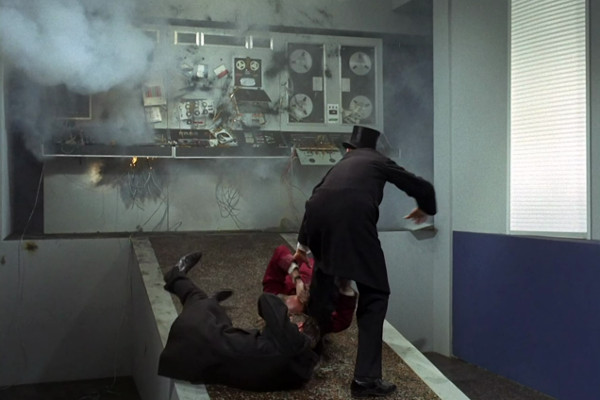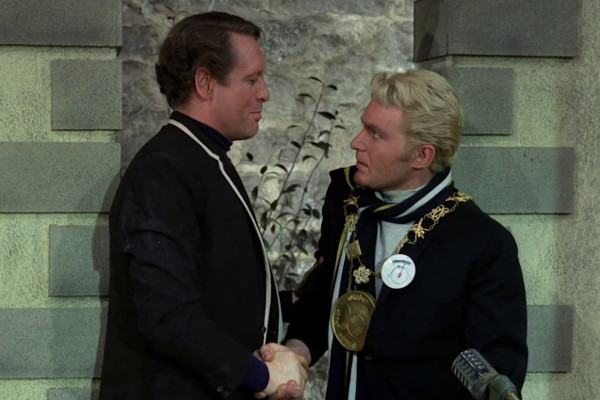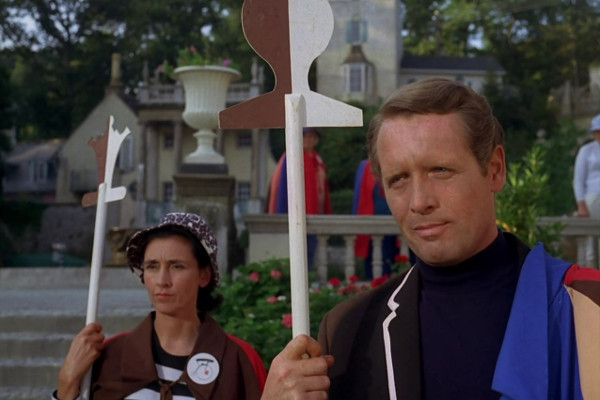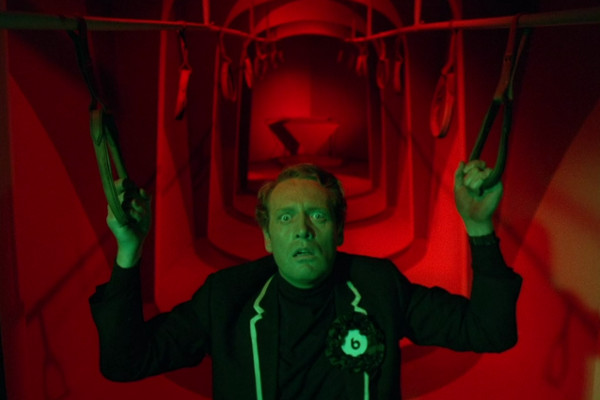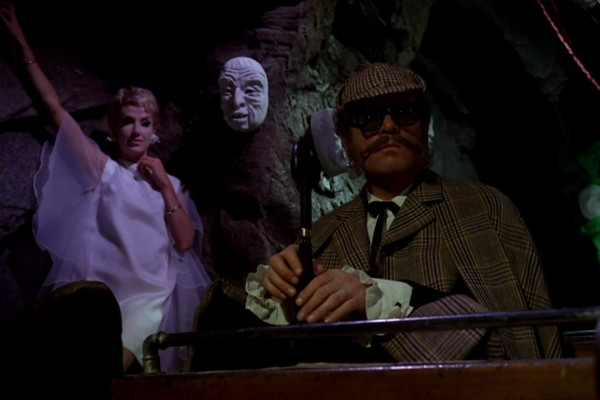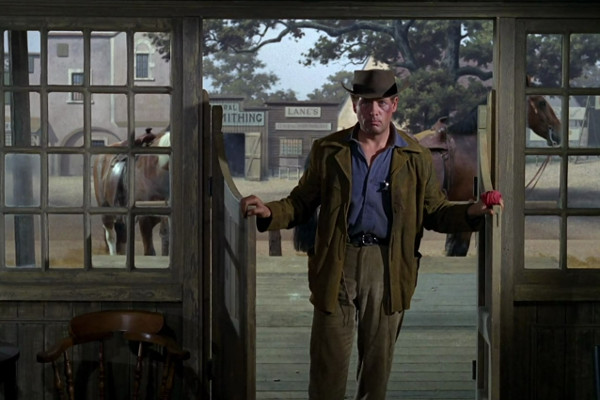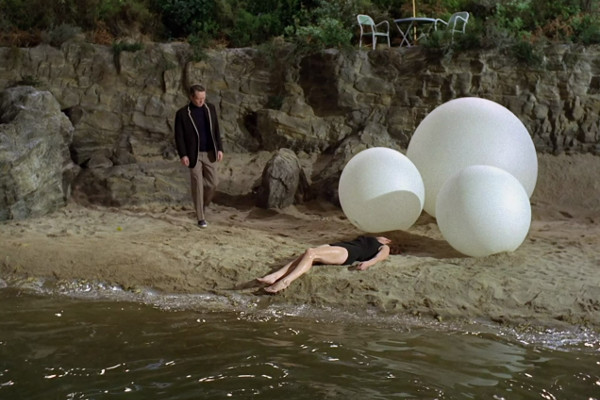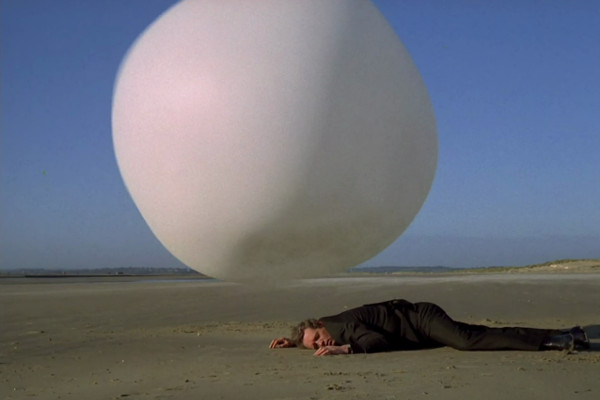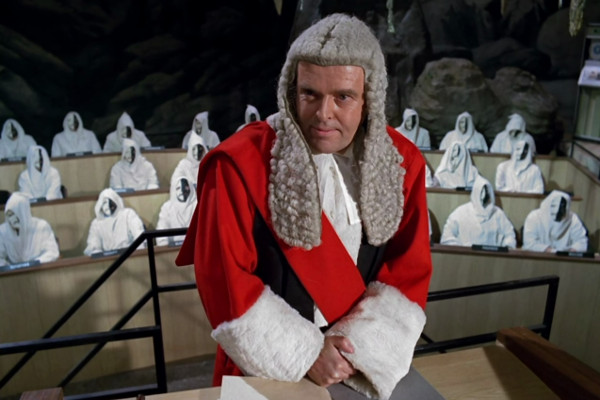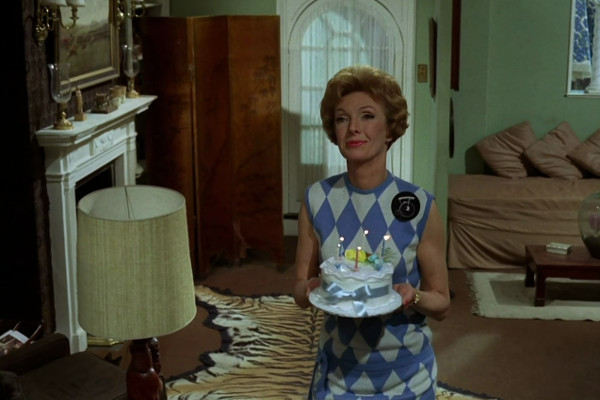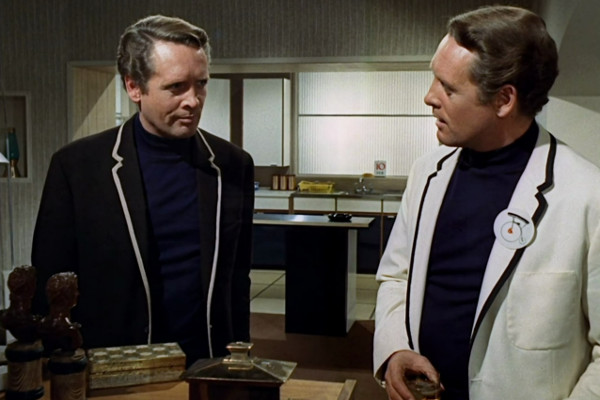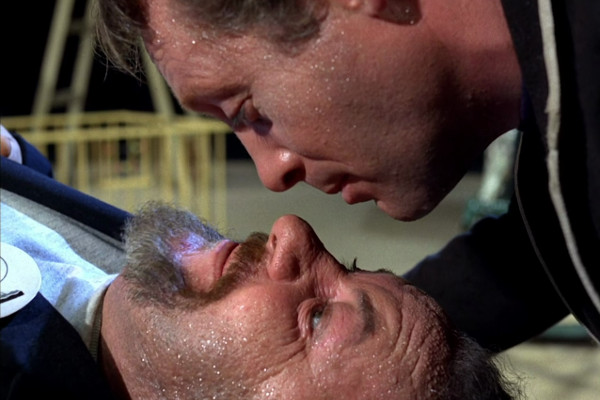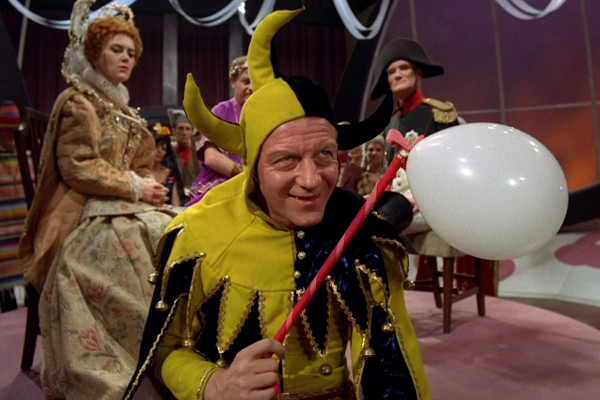The Prisoner episodes ranked by The Anorak Zone, my ranking included after each episode. No surprise as to the worst, a surprise though for the top episode.
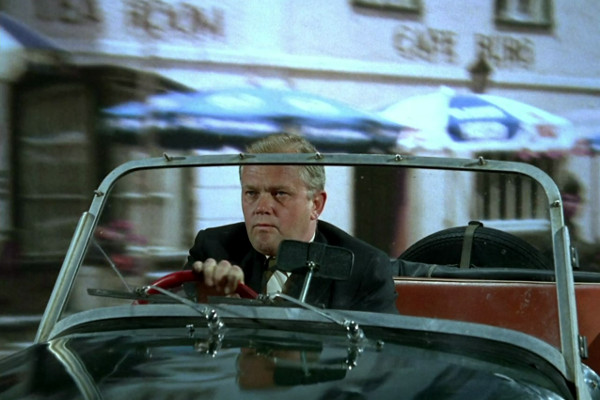
17 Do Not Forsake Me
Oh My Darling
The Prisoner starred Patrick McGoohan as a man who had worked for the state, kidnapped and placed in a bizarre Village where his name was removed and he was given the identity "No.6". His every move was monitored and each week the person in charge - No.2 - would make repeated attempts to break his will and find out why he resigned. All, that is, except for this episode, where McGoohan was away filming the movie Ice Station Zebra, and the bulk of the story is taken up with Nigel Stock playing the lead role after a "mind transfer".
While The Prisoner - a strange genre hybrid kind of show - touched on sci-fi/fantasy concepts like dream observing, ESP and resurrecting the dead, this might just be the most "out there" plot it ran. The premise is watchable for a lightweight spy drama, but the lack of care that went into making this one really harms it. Continuity between shots, poor stunt doubles and a sequence where grey-haired Nigel Stock driving No.6's car is edited into shots of dark-haired McGoohan doing the same thing are just a small part of the poor production on show.
It's a cheap filler episode, badly made, which does greatly drag down the overall quality of the programme, and the series would be far better without it. To say nothing of The Prisoner having a fiancé and potential father-in-law/boss, a situation that undermines, possibly even contradicts, what has already been established about the character...
My ranking 17
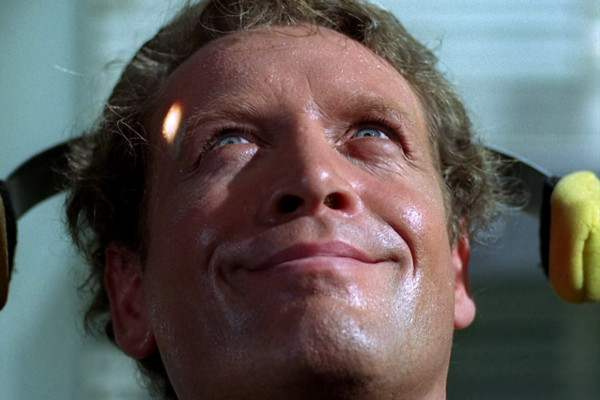
16 A Change Of Mind
The Prisoner is regarded as a well-made television series, shot on film and with high production values. Sadly, this doesn't always turn out to be the case, and by introducing The Village - an architectural landscape in Portmeirion, Wales - the series is forced to keep filming there, or risk corroding the illusion. While other episodes get round this by not featuring the exterior of the Village at all, save in archive footage, or use alternative, backlot locations to create the illusion of the place, altogether eight episodes use studio-based "mock ups" of the Village.
This isn't always a bad thing, providing the episode has the invention to get around it, and while episodes like The Chimes of Big Ben have sections that need to be viewed with a kind eye, generally it's fine, usually amounting to just one or two brief scenes. Sadly, however, the two weakest episodes for this are It's Your Funeral and the entry here, which draw attention to such limitations, rather than distracting the viewer's eye away from them.
This episode did have some footage shot in Portmerion during March 1967, but it was second unit footage with doubles, causing No.2 John Sharp to have about fifty different hair colours when seen from a distance. Clumsily edited, it features a shot of Village guardian Rover so brief that it's often not clear that "he" was in the episode, and it's not altogether clear what's going on.
All of which wouldn't matter unduly if the plot itself hung together. Featuring No.6 being duped into thinking he's had a lobotomy (which was originally to feature a graphic operation rather than the sound waves used, a gory sequence that McGoohan insisted was removed, along with some kissing scenes) only to find out he hasn't after all. Such a plot is clever, yet also convoluted and something of a non-plot. That it ends with No.2 being overthrown just because someone has been hypnotised to shout "unmutual!" at him in the town square is a very unsatisfying conclusion. Ultimately The Prisoner is a good television programme and a huge favourite here at the Anorak Zone, but there's an argument that it could be even if better if the poor and inessential episodes were removed, and it was just released as a ten-part mini-series...
My ranking 15

17 Do Not Forsake Me
Oh My Darling
The Prisoner starred Patrick McGoohan as a man who had worked for the state, kidnapped and placed in a bizarre Village where his name was removed and he was given the identity "No.6". His every move was monitored and each week the person in charge - No.2 - would make repeated attempts to break his will and find out why he resigned. All, that is, except for this episode, where McGoohan was away filming the movie Ice Station Zebra, and the bulk of the story is taken up with Nigel Stock playing the lead role after a "mind transfer".
While The Prisoner - a strange genre hybrid kind of show - touched on sci-fi/fantasy concepts like dream observing, ESP and resurrecting the dead, this might just be the most "out there" plot it ran. The premise is watchable for a lightweight spy drama, but the lack of care that went into making this one really harms it. Continuity between shots, poor stunt doubles and a sequence where grey-haired Nigel Stock driving No.6's car is edited into shots of dark-haired McGoohan doing the same thing are just a small part of the poor production on show.
It's a cheap filler episode, badly made, which does greatly drag down the overall quality of the programme, and the series would be far better without it. To say nothing of The Prisoner having a fiancé and potential father-in-law/boss, a situation that undermines, possibly even contradicts, what has already been established about the character...
My ranking 17

16 A Change Of Mind
The Prisoner is regarded as a well-made television series, shot on film and with high production values. Sadly, this doesn't always turn out to be the case, and by introducing The Village - an architectural landscape in Portmeirion, Wales - the series is forced to keep filming there, or risk corroding the illusion. While other episodes get round this by not featuring the exterior of the Village at all, save in archive footage, or use alternative, backlot locations to create the illusion of the place, altogether eight episodes use studio-based "mock ups" of the Village.
This isn't always a bad thing, providing the episode has the invention to get around it, and while episodes like The Chimes of Big Ben have sections that need to be viewed with a kind eye, generally it's fine, usually amounting to just one or two brief scenes. Sadly, however, the two weakest episodes for this are It's Your Funeral and the entry here, which draw attention to such limitations, rather than distracting the viewer's eye away from them.
This episode did have some footage shot in Portmerion during March 1967, but it was second unit footage with doubles, causing No.2 John Sharp to have about fifty different hair colours when seen from a distance. Clumsily edited, it features a shot of Village guardian Rover so brief that it's often not clear that "he" was in the episode, and it's not altogether clear what's going on.
All of which wouldn't matter unduly if the plot itself hung together. Featuring No.6 being duped into thinking he's had a lobotomy (which was originally to feature a graphic operation rather than the sound waves used, a gory sequence that McGoohan insisted was removed, along with some kissing scenes) only to find out he hasn't after all. Such a plot is clever, yet also convoluted and something of a non-plot. That it ends with No.2 being overthrown just because someone has been hypnotised to shout "unmutual!" at him in the town square is a very unsatisfying conclusion. Ultimately The Prisoner is a good television programme and a huge favourite here at the Anorak Zone, but there's an argument that it could be even if better if the poor and inessential episodes were removed, and it was just released as a ten-part mini-series...
My ranking 15
Last edited:

